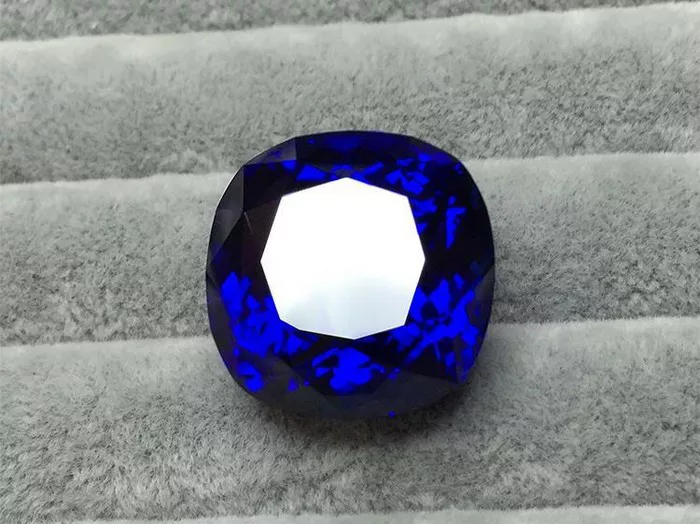Tanzanite, a mesmerizing gemstone known for its striking blue hues, has captured the hearts of jewelry enthusiasts worldwide. While natural tanzanite is a rare and precious gem, advancements in gemstone technology have led to the creation of lab-grown tanzanite. In this article, we will explore the fascinating world of lab-created tanzanite, shedding light on its creation process, properties, and significance. Join us as we unravel the brilliance of man-made tanzanite and discover its allure in the world of gemstones.
Understanding Tanzanite: A Natural Wonder
Before delving into lab-created tanzanite, let us first gain a comprehensive understanding of this remarkable gemstone. Tanzanite is a variety of the mineral zoisite and is renowned for its vivid blue to violet-blue colors. It was first discovered in Tanzania in the 1960s and quickly gained popularity due to its unique beauty. Natural tanzanite is formed through a geological process involving heat, pressure, and the presence of specific chemical elements.
The Creation of Lab-Created Tanzanite
Introduction to Synthetic Gemstones:
Lab-created gemstones, including tanzanite, are produced in a controlled laboratory environment using advanced techniques that mimic the natural gem formation process. These synthetic gems possess identical physical and chemical properties to their natural counterparts but are created in a shorter timeframe.
Tanzanite Synthesis:
The creation of lab-grown tanzanite begins with the selection of high-quality raw materials. Chemical elements such as aluminum, silicon, calcium, and vanadium are combined in precise proportions, mimicking the natural composition of tanzanite. These elements are then subjected to a process called hydrothermal synthesis, where they are exposed to high pressure and temperature inside specialized growth chambers. Over time, the elements crystallize and form tanzanite crystals.
Properties of Lab-Created Tanzanite
Color and Clarity:
Lab-created tanzanite exhibits a range of vibrant blue to violet-blue colors, akin to its natural counterpart. The color is influenced by the presence of vanadium within the crystal structure. The gemstones also display excellent clarity, with minimal inclusions and imperfections.
Hardness and Durability:
Lab-created tanzanite possesses a hardness of 6.5 to 7 on the Mohs scale, making it suitable for various jewelry applications. It exhibits good durability and resistance to scratches and abrasions, ensuring its longevity with proper care.
Optical and Physical Properties:
Synthetic tanzanite showcases similar optical and physical properties to natural tanzanite. It exhibits pleochroism, displaying different colors when viewed from different angles. The refractive index, specific gravity, and birefringence are also comparable to those of natural tanzanite.
Significance and Considerations
Affordability and Accessibility:
Lab-created tanzanite offers a more affordable alternative to natural tanzanite while maintaining its captivating beauty. The controlled production process ensures a consistent supply of gem-quality tanzanite, making it more accessible to a wider range of consumers.
Ethical and Environmental Considerations:
The production of lab-created tanzanite eliminates the need for mining, reducing the environmental impact associated with gemstone extraction. Furthermore, it helps alleviate concerns regarding the ethical sourcing of gemstones.
Authenticity and Disclosure:
It is essential for jewelers and sellers to disclose whether a tanzanite is natural or lab-created. Transparent disclosure allows consumers to make informed decisions based on their preferences and values.
Conclusion:
As we conclude our exploration of lab-created tanzanite, we have uncovered the fascinating world of synthetic gemstones and their role in the realm of tanzanite. While natural tanzanite continues to be a coveted gem, lab-created tanzanite offers an affordable, sustainable, and equally beautiful alternative. The controlled synthesis process ensures the production of gem-quality tanzanite with properties comparable to its natural counterpart. Whether you choose a natural or lab-created tanzanite, the allure of this captivating gemstone remains, allowing you to enjoy the brilliance of tanzanite in a way that aligns with your preferences and values.
Related topics:
- What Is tanzanite made of: Things You Need To Know
- When Will tanzanite be mined out: What You Need To Know
- Where can tanzanite be found: A Full Guide


